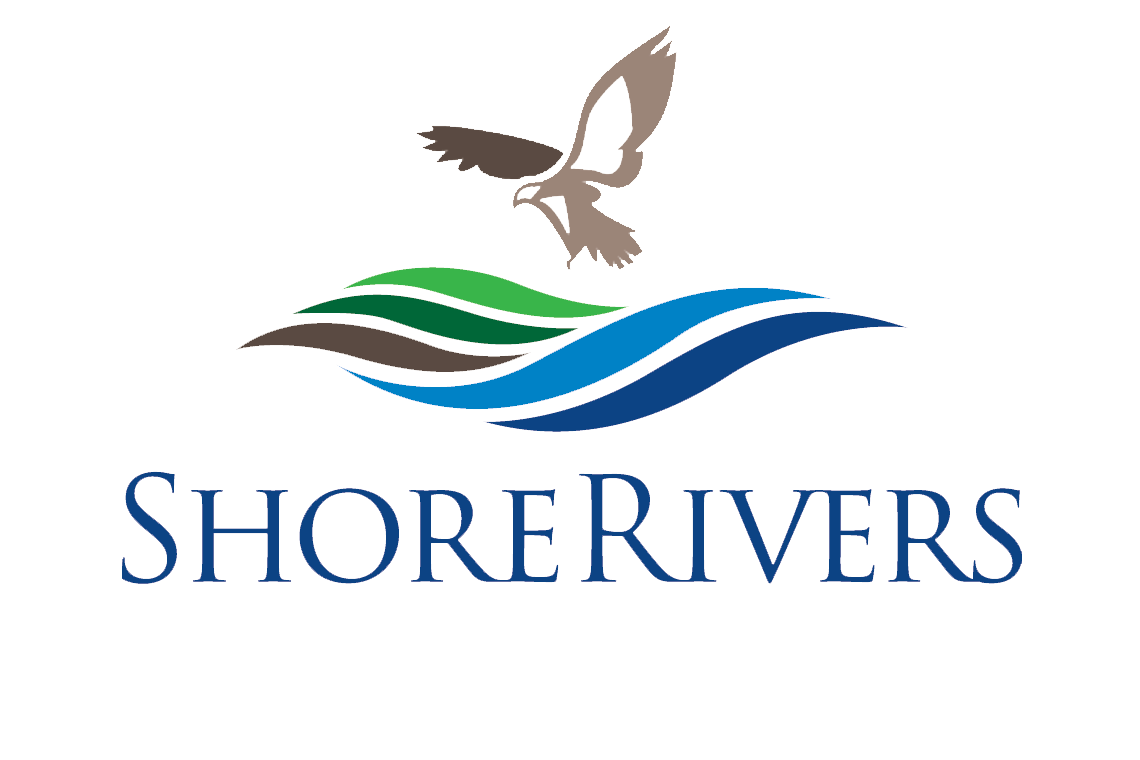Choptank Riverkeeper Matt Pluta collects water samples from La Trappe Creek in 2021 that were included in a study on PFAS (per- and polyfluoroalkyl substances) contamination in U.S. surface waters and showed concerning levels of the manmade “forever chemicals.” Photo by Dave Harp.
ShoreRivers’ Riverkeepers are calling for increased testing by the state after the results of a recently released study on PFAS contamination in U.S. surface waters showed concerning levels of the “forever chemical” in some Eastern Shore waterways. PFAS (per- and polyfluoroalkyl substances) are manmade chemicals that persist in the environment and can be highly toxic with continued exposure.
The study, conducted by Waterkeeper Alliance, assessed PFAS levels in 114 watersheds around the country, including 16 within the Chesapeake Bay region. Maryland had the highest total number of detections and the highest number of different PFAS compounds detected in waterways nationwide. La Trappe Creek, a tributary of the Choptank River, had the second highest number of detections in the state for three of the five most prevalent compounds.
“The results of this study clearly demonstrate the need to urgently increase monitoring for these chemicals in our rivers,” said Matt Pluta, ShoreRivers’ Choptank Riverkeeper and Director of Riverkeeper Programs. “Once we begin detecting PFAS in local waterways and on our land, it’s only a matter of time before we begin to detect them in the fish, crabs, oysters, and even venison that we eat.”
PFAS are a family of manmade chemicals used for decades to create things like water-repellant clothing, non-stick cookware, firefighting foam, textile treatments like Scotchgard, stain resistant fabrics, personal care products, and food contact materials like microwave popcorn bags and fast-food wrappers. They are are biopersistent, meaning they remain in organisms indefinitely without breaking down, and are bioaccumulative, meaning that over time, they build up in ever increasing amounts in people, wildlife, aquatic life, and the environment.
PFAS can also enter wastewater treatment systems after being absorbed by humans who consume contaminated meat and fish and then discharged into waterways or applied to farm fields in the form of biosolids fertilizer. Continued exposure to PFAS can lead to adverse health effects including cancers and other diseases of the thyroid, liver, and kidney, and developmental issues in fetuses and infants.
Of the eight water samples that ShoreRivers collected for the study, PFAS were detected in five. In addition to La Trappe Creek, where the sample was collected at the point of discharge from the Trappe wastewater treatment plant, concerning levels of PFAS were also detected in Mill Creek on the Wye East River, Morgan Creek’s Urieville Lake on the Chester River, and Mill Creek in the Sassafras River watershed.
“The Eastern Shore has a number of wastewater spray irrigation permits and smaller wastewater treatment plants that are aging and failing to meet treatment standards,” Pluta said. “The PFAS results from La Trappe Creek at the point where the Town of Trappe’s wastewater treatment plant discharges underscore the need to upgrade and modernize the treatment technology at these older systems before contamination levels get worse.”
The study organized by Waterkeeper Alliance comes on the heels of an effort from the Maryland Department of the Environment to sample fish tissues for PFAS in 2020. The department reported that samples from the Eastern Shore showed no levels of concern, but issued its first-ever fish consumption advisory based on PFAS levels in Piscataway Creek in Prince George’s County, and a first of its kind wastewater discharge permit for the Naval Support Facility Indian Head requiring monitoring for PFAS in wastewater and biosolids.
To learn more about the report from Waterkeeper Alliance, a nonprofit focused on clean water that connects and mobilizes more than 300 local waterkeeper groups like ShoreRivers worldwide, and to read the study’s results in full, visit waterkeeper.org/pfas. ShoreRivers believes that more testing is needed to present a clearer picture of the presence of these chemicals and their effects on Eastern Shore waterways. To support those efforts, or to learn more about the work ShoreRivers is currently doing to monitor local rivers, visit shorerivers.org or contact your local riverkeeper.

